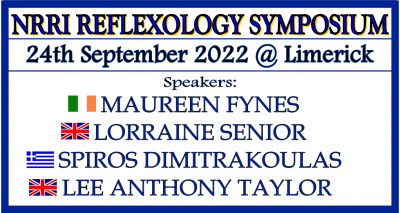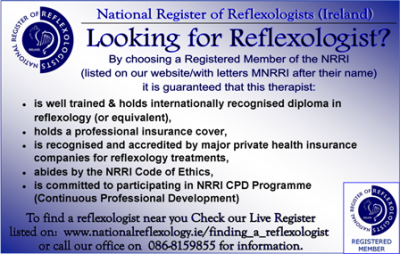LOOKING FOR REFLEXOLOGIST? >>CLICK HERE>>

Reflexology
for Back Pain
Reflexology is the art and science of applying
pressure to key "reflex" points on the feet, hands and sometimes ears
to help relieve pain or correct imbalances in other parts of the body. Often
associated with Traditional Chinese Medicine (TCM), this ancient therapeutic modality also has antecedents in ancient Indian
Ayurveda and Egyptian
medicine. While anyone who has experienced reflexology can attest to its
benefits for relaxation and stress relief, how can reflexology help ease back
pain?
Theory
of Reflexology
Reflexology, trigger point therapy and acupressure are all natural therapies sharing the
common theory that energy pathways exist in the body. These pathways and their
meridians have been meticulously mapped. The feet and hands, which together
contain over 72,000 nerve endings, also contain innumerable energy meridians
(meridians of ki) that are energetically connected to the vital organs and
areas of the central nervous system. It is believed that a reflexologist can
help relieve pain and restore the body's natural chemical and neurological
balance by applying pressure and manually massaging or manipulating energy
meridians on the feet and hands.
Reflexology
for Back Pain
When treating for back pain, a
reflexologist takes a holistic approach. While manipulating certain meridians
will be part of the process, the reflexologist will also take a number of other
things into account. A typical first session begins by discussing the issue
with the patient. What initially caused the back pain? Is it due to heavy lifting,
poor posture, sudden trauma or something else?
An examination of the feet will follow. There may be a callous on one foot that
indicates that the patient applies more pressure to that side of the body or
oedema may be present, indicating poor circulation and a sedentary lifestyle.
These and other physically apparent abnormalities will help the reflexologist
determine the best course of treatment.
The actual reflexology session may last anywhere from half an hour to an hour.
The client will remain fully clothed except for the removal of shoes and socks
and will lie down comfortably on a massage table while the practitioner works.
The reflexologist uses their fingers, thumbs and palms; kneading, massaging,
manipulating or holding steady pressure as required. None of this will be
painful and most patients describe the treatment as profoundly relaxing.
At the end of a single treatment, many patients feel distinct relief from the
symptoms of back pain. However, this is only one of the reflexologist's goals.
In order to help prevent a recurrence of back pain, the practitioner will also
attempt to restore balance to the body and even promote a healthier
psychological attitude. If oedema is present, part of the treatment will
include an attempt to improve circulation.
As a form of complementary medicine, reflexology is not necessarily meant to be
a stand-alone treatment program. If treatment begins early, before back pain is
present, it may help prevent its occurrence. If serious pain is already
present, the reflexologist may be able to help minimise the need for
medication.
Reflexology is a safe and non-invasive procedure, but if your back pain
persists, you may need to see a specialist. Your holistic doctor may be able
to help you find the right combination of therapies, both conventional and
alternative, to help you overcome back pain and prevent its recurrence.


 Our Objectives
Our Objectives CPD Programme
CPD Programme





